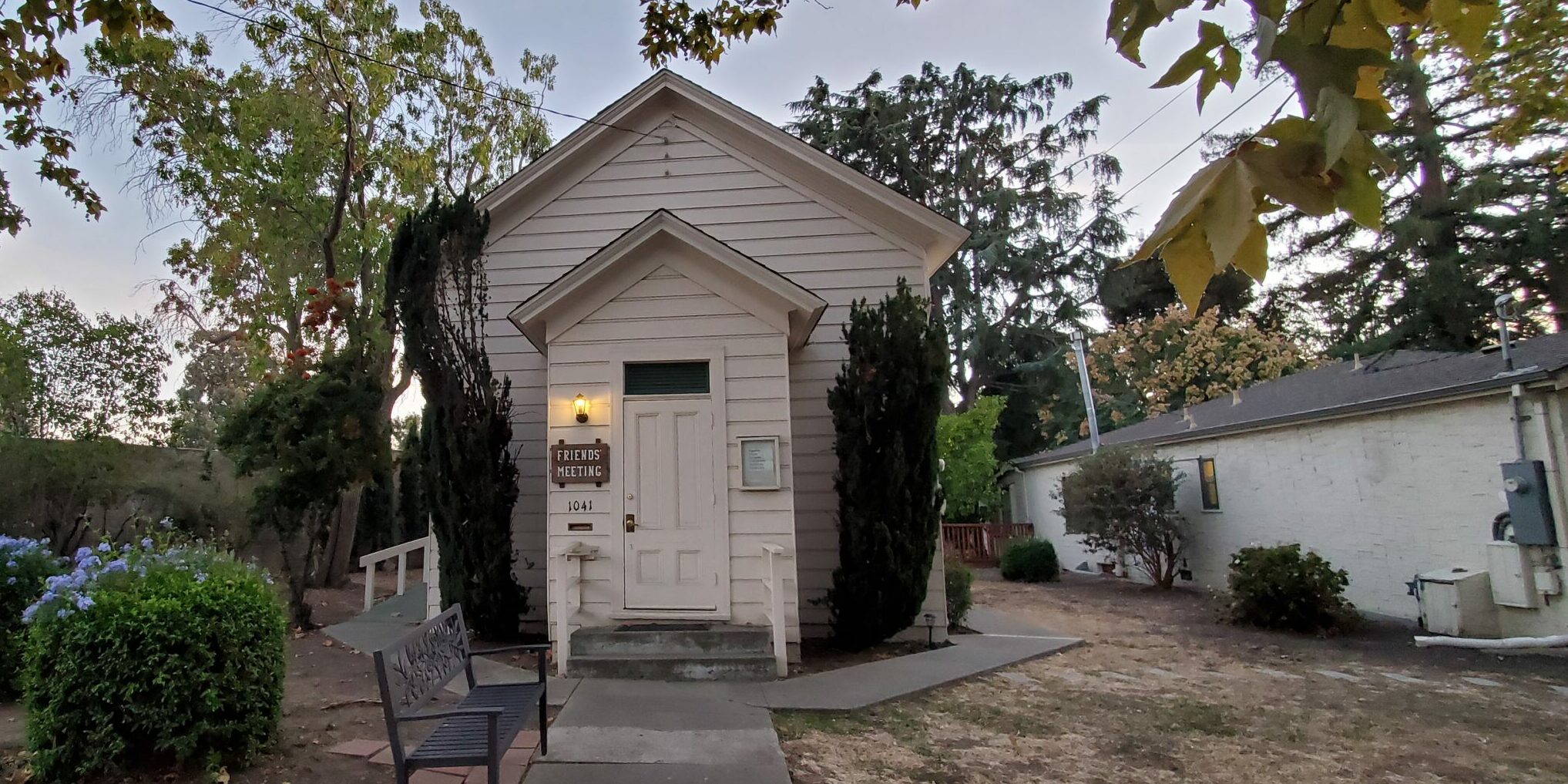The oldest Quaker house in California sits at the end of a cul-de-sac. But don’t worry. It isn’t going anywhere.
Right where Morse Street collides into 880 from the north, one finds an old white house with green shutters. Also known as the Society of Friends, the Quakers have worshiped in this house since it was built in 1885.
Over the decades, the Quakers have rented out the rooms to various other groups that held their own meetings, which is where I came into the picture. I remember Amos Brokaw, the old ’60s war resister who cared for the property. Even though I haven’t been inside since before the Covid era, I still hazily recall a poster in the back room, a genealogy depicting how the Quakers first came to the New World in the 17th century.
I recently shuffled up to the property during the evening twilight and found the porchlight on. That was all I needed. The light spurred me onward, or perhaps backward through the bumbling farce of San Jose development history, and how the Quaker House survived it all.
Initially built at 1020 Morse in April of 1885, the Quaker house, aka the Friends Meeting House, was relocated 200 feet to the west in 1958, essentially across the street, so the city could build the freeway. The onramp from The Alameda onto southbound 880 now goes right through the house’s original location. For 65 years it’s been at its current location, 1041 Morse. It still looks exactly the same, inside and outside.
Any map will allow contemplation of what the neighborhood looked like before 880 and when Morse went all the way through. Back in the old streetcar days, a 1917 newspaper ad for the Quaker house said, “Take the Santa Clara car to Davis Street.”
However, the history of the Quakers in San Jose goes back further than this house. They first came to New England around 1661, before hitting Baltimore in 1672, Philly in 1682 and New York in 1695. They became powerful in business and included many influential families in the colonies before spreading to the South and the Midwest.
Skip to 1861, when Jesse and David Hobson left North Carolina and started the first Quaker group on the West Coast, initially meeting in San Jose living rooms. Then in 1866 they built a small religious venue at the northeast corner of Ninth and St. John.
That first Quaker group eventually split into two factions. One was led by the Hobsons and took a more evangelical approach replete with ministers, eventually relocating to a new building on Stockton Avenue. A spinoff group, started by Joel Bean and his wife Hannah, called themselves the College Park Society of Friends and preferred the more traditional Quaker method of silent unprogrammed worship without ministers or formalism. The Beans were booted out of the original group for this exact reason.
The College Park Society of Friends started in 1883, initially meeting downtown above a saloon until the Friends House was built. The evangelical group died out in the ’20s, but the group started by the Beans to this day still meets in the Morse Street house.
Much of the research into San Jose Quaker history came from Herbert C. Jones, a prominent attorney in the mid-20th century. In 1949, he wrote: “Thus the little Meeting House has stood through the years. At first it was surrounded by fields of grain. In the spring it witnessed the sprouting of the tender young shoots of barley; in summer it gazed upon the surrounding fields of hay-cocks; in the fall it was surrounded by the brown California stubble. As the years have passed, the fields have been subdivided into lots, until now it is surrounded by homes.”
Since then, even more has come and gone. On the other side of 880, Joan and Phil Hammer lived not too far away, as did historian Leonard McKay, as did Ken Kesey’s lawyer, allowing Kesey to park the Merry Prankster bus whenever he escaped San Francisco. Nowadays, the 22 runs down The Alameda. There is no streetcar.
The Quaker house has outlasted everything in San Jose. The history is out there for all to discover. Just follow the porchlight.




Wow, thanks, Gary. Yes, our Quaker meetinghouse is old and quaint. Yes, we still meet here — and also via Zoom for hybrid meetings now. Your readers can get more information at https://www.sanjosefriends.org.
I wonder if you have any members from the Livezey family. We have Livezey relatives in the midwest. Originally spelled Livesey, they were outcast for religious reasons and told to change the spelling.
Gary, this is such a nice write up! So lovely to be reminded of Amos. I miss our Thursday night sits – so much so that occasionally I sit with the Quakers. 1041 Morse St will always be my spiritual home. ??
Great job Gary! This too has a special place in my heart. The rich history of all the love it holds will live on in so many. I miss our sits on Thursday as well Violet. ??♀️